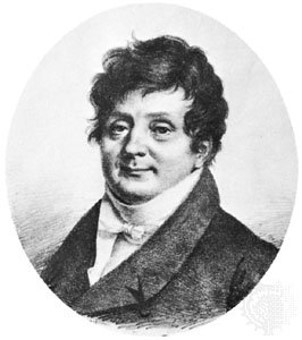- Fourierserieutveckling för att analysera godtyckliga periodiska signaler i frekvensplanet. Vågformssymmetrier för att identifiera övertoner i periodiska signaler.
- Analys av trefassystem med symmetriska komponenter.
- Godhetstal för att kvantifiera den harmoniska distorsionen hos periodiska signaler.
- Bärvågsbaserade pulsbreddsmodulatorer (PWM) för en- och flerfasiga spänningsstyva omvandlare.
- Fourieranalys av bärvågs-PWM med dubbel Fourierserieutveckling.
- Enkla rumsvektormodulatorer.
- Selektiv harmonisk eliminering.
- Direkta moduleringsmetoder som direkt kontroll av vridmoment (DTC).
- Multinivåomvandlartopologier.
- Metoder för multinivåmodulering.
EJ2311 Effektelektronisk modulation 6,0 hp

Modulering av effektomvandlare spelar en avgörande roll inom modern kraftelektronik, där låga förluster samt dynamiska krav, övertoner och elektromagnetisk störning (EMI) är av stor betydelse. Syftet med kursen är att ge en gedigen förståelse för moderna syntes- och analysmetoder för modulering för spänningstyva somvandlare.
Information per kursomgång
Information för VT 2026 Start 2026-01-13 programstuderande
- Studielokalisering
KTH Campus
- Varaktighet
- 2026-01-13 - 2026-03-13
- Perioder
VT 2026: P3 (6 hp)
- Studietakt
50%
- Anmälningskod
60866
- Undervisningsform
Normal Dagtid
- Undervisningsspråk
Engelska
- Kurs-PM
- Kurs-PM är inte publicerat
- Antal platser
Ingen platsbegränsning
- Målgrupp
- Sökbar för alla masterprogram under förutsättning att kursen kan ingå i programmet.
- Planerade schemamoduler
- [object Object]
- Schema
- Del av program
Kontakt
Kursplan som PDF
Notera: all information från kursplanen visas i tillgängligt format på denna sida.
Kursplan EJ2311 (VT 2026–)Innehåll och lärandemål
Kursinnehåll
Lärandemål
Efter godkänd kurs ska studenten kunna
- beräkna de övertoner som resulterar från olika moduleringsmetoder och deras inverkan på olika anslutna laster och källor
- lösa problem relaterade till val och anpassning av pulsbreddsmodulering (PWM) för att uppfylla vanliga prestandakriterier
- analysera moduleringsmetoder med hjälp av moderna numeriska datorverktyg och EMT-simulatorer och förklara sina lösningar.
Kurslitteratur och förberedelser
Särskild behörighet
Kunskaper i effektelektronik, 6 hp, motsvarande slutförd kurs EJ2301.
Minst en av följande:
- Kunskaper i tidskontinuerliga signaler och system, 6 hp, motsvarande slutförd kurs EQ1110/HF1011/II1303/CM2013/SD2125.
- Kunskaper i differentialekvationer och transformmetoder, 6 hp, motsvarande slutförd kurs SF1523/SF1633/SF1682/SF1683.
Rekommenderade förkunskaper
Kunskaper i effektelektronik, 6 hp, motsvarande slutförd kurs EJ2301 SAMT minst en av följande:
Kunskaper i tidskontinuerliga signaler och system, 6 hp, motsvarande slutförd kurs EQ1110/HF1011/II1303/CM2013/SD2125
ELLER
Kunskaper i differentialekvationer och transformmetoder, 6 hp, motsvarande slutförd kurs SF1523/SF1633/SF1682/SF1683
Kurslitteratur
Examination och slutförande
Betygsskala
Examination
- LAB1 - Laboration, 1,0 hp, betygsskala: P, F
- PROA - Datoruppgift, 1,0 hp, betygsskala: P, F
- PROB - Datoruppgift, 1,0 hp, betygsskala: P, F
- TENA - Skriftlig tentamen, 3,0 hp, betygsskala: A, B, C, D, E, FX, F
Examinator beslutar, baserat på rekommendation från KTH:s handläggare av stöd till studenter med funktionsnedsättning, om eventuell anpassad examination för studenter med dokumenterad, varaktig funktionsnedsättning.
Examinator får medge annan examinationsform vid omexamination av enstaka studenter.
När kurs inte längre ges har student möjlighet att examineras under ytterligare två läsår.
Examinator
Etiskt förhållningssätt
- Vid grupparbete har alla i gruppen ansvar för gruppens arbete.
- Vid examination ska varje student ärligt redovisa hjälp som erhållits och källor som använts.
- Vid muntlig examination ska varje student kunna redogöra för hela uppgiften och hela lösningen.
Ytterligare information
Kursrum i Canvas
Ges av
Huvudområde
Utbildningsnivå
Övrig information
I denna kurs tillämpas EECS hederskodex, se: http://www.kth.se/eecs/utbildning/hederskodex.